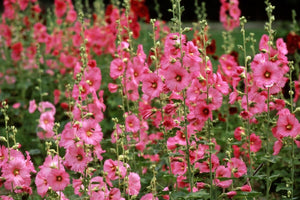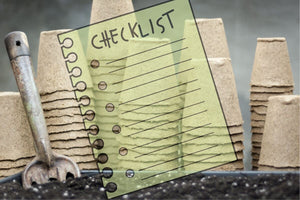Garden Soil Testing: Worth the Lab Analysis? Take a Look at My Results

How to Get a Soil Analysis
The health of your soil is vital to growing a productive garden. We often tell gardeners to get their soil tested. If your soil doesn’t have the necessary nutrients, your plants will suffer. Testing soil samples from your garden will help you understand where you’re starting from.
What exactly does it mean to have your soil tested, and how is it done?
I’ll take you through the steps I went through to get a soil test through my state extension office. I’ll also explain what the results mean so you can see how this information could be helpful for your garden.

Collecting a Soil Sample
First, I had to collect a “good sample” of the soil I wanted to be analyzed. A good sample is a mix of soil from a specific area that is not contaminated by other materials.
When choosing what soils to include in your test, pick a defined growing space. If you have a small area where you plan to grow a vegetable garden and another area with a lawn, have them tested separately.
For this soil test, I chose a garden bed where I’ve been growing mainly tomatoes and cucumbers for a few years. While it has performed fairly well, I wanted more information about nutrients so I could determine if I should be using more fertilizer.
I collected soil from this section only, not from my lawn and flower beds. My flower garden area will be collected and tested separately. With unique collection and testing for each space, I can make targeted amendments and be more specific in adding fertilizer. This separation will become even more important as I continue to grow and test each year.
My raised beds have a much different soil composition than my in-ground beds, so it makes sense to test these separately as well.
To obtain a good soil sample, I first cleared away the layer of leaves.
Then I used a shovel to dig straight down 6 inches.
I took the soil that was between four and six inches deep and placed it in a clean plastic bucket. (The instructions from the state extension said that a metal container would contaminate the sample.)
I collected soil samples from 6 areas in the vegetable garden and mixed them together.
I pulled out any rocks and large chunks.
From this mix, I took about 2 cups and put it in a clean glass jar.

Soil Testing Through County or State Extension
At the county extension office, they put the sample into a box and filled out a form, and I paid for the testing. You can also pick up a form and collection box from your extension office and then mail in your soil sample.

Soil Test Report
After about 2 weeks, I got the results through email. The results were surprising to me.
Understanding My Soil Test Results: What They Tell Me About My Garden
Soil pH = 6.9
A soil test can tell you the pH level, which is very important. The pH level determines how well plants can utilize the available nutrients.
I was surprised that it was so close to neutral. Vegetables generally need a soil pH of 6.2 to 6.8. This is the range where nutrients are soluble, making them available to plants. This may seem like something outside of this range wouldn’t make much difference, but the change from 6.8 to 6.9 is 10 times greater.
What it means:
The soil pH is almost neutral, which is good for most vegetables and herbs. If I want to grow blueberries, I’ll need to add sulfur. It takes time to lower the pH, so I would need to add in recommended amounts in the fall. For now, I’ll leave it where it is and add a fresh layer of compost in the spring.
Phosphorus = 113.0 lbs/A
This rating goes from very low to excessive. Right now, my soil is in the high range. Phosphorus is essential for cell division, a process necessary for growth. Having enough phosphorus available is important throughout the growth cycle.
What it means:
With a naturally high phosphorus content, I can skip bone meal and other high-phosphorus fertilizers.
Potassium = 1746 lbs/A
The potassium in my soil is in the very high range. A sign of low potassium is yellowed and curled leaves. My tomato vines were all very healthy-looking this year. Now I see that it was due to all the potassium. Potassium also affects the amount of sugar in the fruits. I wonder how that affected the flavor? This year, I only grew tomatoes in one location, so I didn’t have any to compare them with.
What it means:
I don’t need to add potash or fertilizer with a high K number.
Calcium = 5689 lbs/A
Again, this was in the high range. Calcium is an essential nutrient for preventing blossom end rot. The test indicates that I don’t need to add calcium, but consistent watering will help ensure the calcium is available for plant uptake. Even though I struggled with consistent watering, I didn’t have any problems with blossom end rot in this garden spot.
What it means:
Knowing that there’s sufficient calcium in the soil, I’ll focus on setting up a watering system. Maintaining a consistent moisture level will ensure that calcium can reach the plants.
Magnesium = 482 lbs/A
This ratio was in the high range. Magnesium is essential in photosynthesis and facilitates the plant's uptake of other important nutrients. Magnesium deficiency is seen in older leaves that turn yellow.
What it means:
If I were still on the fence about Epsom salts, this seals the deal. With magnesium in the high range, I don’t need to add any more.
Organic Matter = 4.3%
Ideally, a ratio of 5% organic matter is what you’re shooting for, so I’m just about there. Organic matter improves soil structure, which allows for water movement, nutrient exchange, and microbial life.
What it means:
I’ve been amending the soil by adding shredded leaves for mulch. I’m probably on the right track with this and will add more leaves this fall. Then, in the spring, I’ll add compost before planting.
Cation Exchange Capacity = 18.5meq/100g
Cation Exchange Capacity is the scientific way of describing how well your soil can hold onto nutrients and make them available to your plants. The higher the number, the more capacity your soil has to “hold onto” important nutrients like calcium, magnesium, and potassium instead of letting them wash away after watering or rain. Sandy soils have a lower CEC (2-5), while clay soils can have a CEC ranging from 25 to 40. A low CEC is considered to be anything below 10.
I knew cation exchange capacity (CEC) was important, but it was more a scientific concept than a practical reality in the garden. Now that I’ve put it in context with my test results, I appreciate this information even more.
What it means:
A CEC of 18.5 is considered moderately high, which means my soil has a good balance of clay and organic matter. It’s capable of storing plenty of nutrients and releasing them to plants over time. That’s an excellent foundation for a healthy, resilient garden.
Since my soil already has good nutrient-holding capacity, I don’t need to be overly aggressive about adding organic matter or fertilizer.

Soil Amendment Steps After Testing
There were other things I could have had tested. But this was exactly what I needed for a home garden. The Soil Texture would have given me more specific ratios of sand, silt, and clay. I had already tried the DIY home soil texture test (link), and it appears to align with the CEC results.
I didn’t request testing for micronutrients, so I don’t have the values of manganese, iron, copper, and boron. If it seems to be a problem, I can request testing next fall.
How I’ll Use This Information
After looking through the soil test results, I have to say I’m even more optimistic about my next gardening season.
The results show that my soil’s nutrient-holding capacity is strong, so I’ll continue to:
Add compost each season to maintain and improve CEC over time.
Use balanced, slow-release fertilizers that match my plants’ needs.
Keep using mulch on the surface to protect soil life and prevent nutrient loss.
Set up a consistent watering system so plant roots can take up nutrients.
A lab soil test gives you crucial information about your garden soil. Having your soil analyzed by your state’s extension service is relatively low-cost, and the information can save you money in the long run. Once you have the test results, you can make targeted adjustments to the fertilizer and amendments to increase soil fertility.
At a minimum, you want to conduct a soil test every 3 years. However, I’m curious to see how nutrient levels and organic matter will change when I grow beans and squash next season. So I might be testing again next fall. It’s recommended that you test at the same time of year when comparing results.
If you’ve been wondering about the quality of your soil, consider getting it tested. You’ll be more informed about the foundational health to create your best garden ever.
Popular Posts
-

Hollyhocks from Seed: The Perfect Addition to Your Cottage Garden
-

March Madness: Gardening Tasks to Do Now for a Big Summer Win









Leave a comment